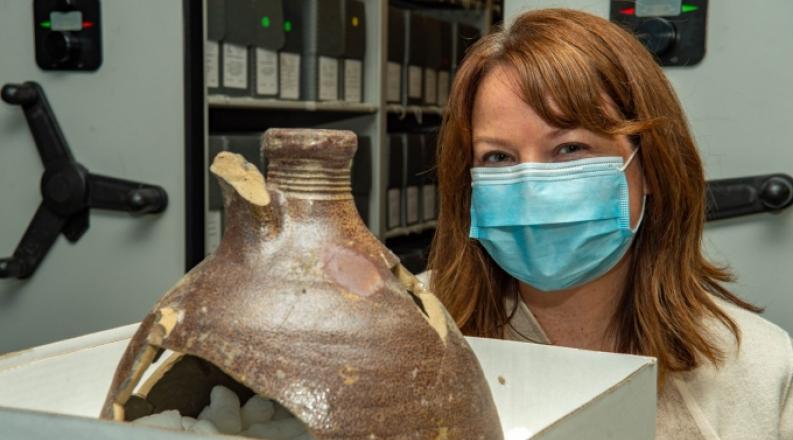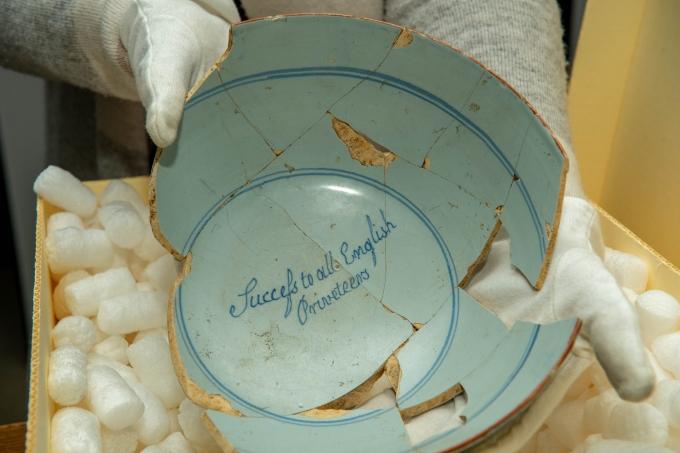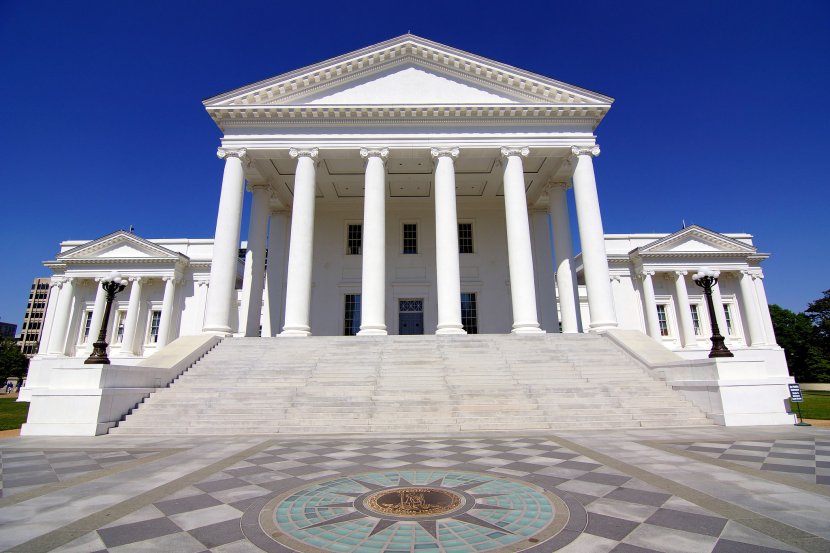Among the discoveries is a blue-and-white bowl with the motto “Success to all English privateers” painted in the center. Photo Chuck Thomas/ODU
By Amber Kennedy
One man's trash pit is an archaeologist's treasure. Stumbling onto long-buried discards can be a thrill for those working in the field; what we throw away says as much about how we live as what we keep.
That was the case in 2017, when a team of archaeologists unearthed nearly 20,000 items during a dig preceding construction at the interchange of 1-64 and I-264 near Newtown Road in Virginia Beach. On land belonging to the Coastal Virginia Church, the team from the College of William & Mary Center for Archaeological Research found objects from prehistoric times to the 18th century. They found layers and layers of china and pottery wedged in the dirt, some fully intact.
When the dig concluded, the artifacts were handed back to the church, whose congregation weighed the best future home for their preservation and study. They approached Old Dominion University Libraries' Special Collections and University Archives, and the Libraries agreed to accession 20 of the objects in October. Now, the items are available to students, faculty and the outside community to study and view.
"The church really wanted it to stay close to where the history took place," said Jessica Ritchie, head of Special Collections and University Archives. "We hope students and faculty will get excited and contribute to the scholarship of what's known about who these people were."
The objects show the now-bustling area was once home to prehistoric native people who used smooth stones to sharpen rock into what's called a "biface" - a stone implement similar to an arrowhead or spear point.
Eventually, the area became an English colonial settlement called Newtown, a once-thriving port. The onset of the Revolutionary War led to a shift, with much of the population moving toward Kempsville. The trash pit makes it seem like some colonists made a hasty, or careless retreat; fully intact china and stoneware was discovered, cast aside as worthless.
The surviving artifacts tell the stories not only of the colonists, but of those they enslaved. Alongside fine yellow Staffordshire slipware china are examples of stoneware pottery called "colonoware" made by the highly skilled enslaved people who typically built ceramics by hand, rather than thrown on a wheel. In many cases, they clearly modified their techniques to suit the tastes of the colonists. The typically unglazed, sand-colored pieces were made for everyday use, but also sold at local markets.
"Even though they didn't have ownership of themselves, they had ownership of their art," Ritchie said.
The collection includes a stoneware tankard, jug and broken pieces. Little is known about the pottery, but Ritchie hopes students and faculty will be inspired to research what the artifacts can tell us about the enslaved population of colonial Virginia Beach based on the techniques and materials.
Among the fine china pieces is a blue-and-white bowl with the motto "Success to all English privateers" painted in the center. It raises questions about who settled on the south side of Hampton Roads - questions Ritchie would like to see answered.
"Once the church realized they had important items on their property, they didn't want them to end up in a storage room," she said. "The thing that stuck out about the collections' academic potential is that you see a nexus of communities - prehistoric, native, Colonial, enslaved. Even though it's trash from a small community, you can really learn so much about what life was like back then."
Studying what they left behind is "a great way to honor people who have not been at the forefront of history," Ritchie said.
The Special Collections and University Archives staff offer virtual research services and limited research appointments. Email libspecialcollections@odu.edu to learn more.







